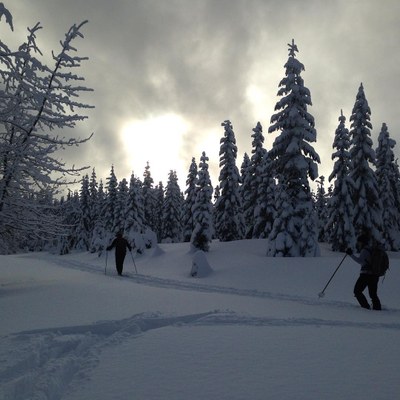
The Northwest Forest Plan (NWFP) governs approximately 24 million acres of public land from Western Washington to Northern California. The plan is now in the early stages of a major revision. Given that outdoor recreation is the number one use of our National Forests and that recreation provides significant economic benefits to gateway communities and our State, we see this as an opportunity to include outdoor recreation as one of the benefits of effective management for public lands where it has previously not been included.
What is the Northwest Forest Plan?
Enacted in 1994, the NWFP was enacted as a compromise between loggers and environmentalists and is essentially an ecology based plan. Its creation was largely spurred by the spotted owl being added to the Endangered Species list in 1990. The plan limits logging to certain areas in order to protect wildlife, old growth forests, and stream corridors. The subsequent development of the Aquatic Conservation Strategy, a crucial component of the NWFP, provided a scientific framework for the protection of salmon which have been listed under the Endangered Species Act.
The NWFP has three primary focuses:
- The management of forests for sustainable timber production and biological diversity protection
- Coordinating federal agencies and advice from non-federal interests
- Initiative for economic assistance and job retraining for displaced timber works and communities.
Some of the key elements of the NWFP also protect the experience of recreational users on public lands, but outdoor recreational was not intentionally included in the planning process. However, now that the NWFP is up for revision, The Mountaineers is participating in these conversations and we have a unique opportunity to make sure role of recreation in our NW Forests is incorporated in this planning process.

Why Recreation should be Considered in the NWFP Revision
- Recreation is the number one public use of Forest Service lands.
- The NWFP directly affects recreation. Certain policies of the NWFP allow recreation to flourish. For example, the Aquatic Conservation Strategy is a part of the NWFP that protects stream-side corridors and preserves water quality for the benefit of those who engage in water-based recreation.
- In Washington State alone, outdoor recreation employs 199,000 people and brings in over two billion dollars in local and state taxes. We would like to see our National Forests recognize that logging is not the only economic resource of forests.
The current measure of professional success for a national forest supervisor is how many board feet he or she puts up for sale, which means that forest managers focus on timber rather than the many other uses of a forest. Including recreational use in success metric, within relevant parameters, as a metric for measuring how well a forest supervisor is doing. - Oregon Senator Ron Wyden

Moving Forward
We hope that in the process of revising the NWFP, the Forest Service acknowledges outdoor recreation is crucial to local economies and the livelihood of numerous Americans and that the NWFP will include actions that reflect this.
We believe that we can build on the strong foundation NWFP - outlines that protects the natural landscape and wildlife while ensuring that there is a place for outdoor recreation on our public lands. The Forest Service expects to finish the revisions by 2019, so there is time to incorporate the concerns of all stakeholders, including outdoor recreation.
Make sure that you are signed up for our e-newsletter conservation currents to receive updates about future opportunities to get involved with this important issue!
 Luke Hogfoss
Luke Hogfoss